A deadly plant, good wild food - and mushrooms! Come with me to explore Oregon's coastal forest in the Siuslaw National Forest.

Here's the 1st part of my saunter in the Siuslaw National Forest. I made this trip on September 14, 2017. The autumn rains still haven't started, but this part of the Siuslaw National Forest stays green from Pacific Ocean fog all through the dry summer.

Mystery Plant - Watch Out!
At the end of Part 1 of my Siuslaw National Forest walk, I left you with a mystery. What is this plant? Can you identify this plant just from its leaves? What do you think I will do with this plant?
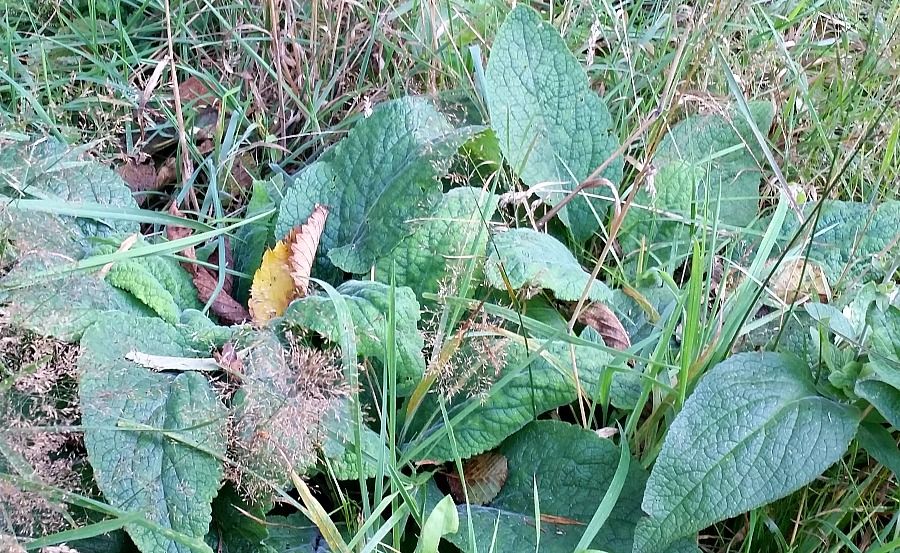
Foraging some kinds of plants can be challenging. Some edible plants may look like others that are not worth eating, or even worse -- downright toxic! That's the case with the mystery plant I found in the meadow.
I want to thank @osm0sis and @erikaflynn for their identification of my mystery plant. They make a point about this plant very clearly! @osm0sis thought this plant looked like Borage (Borago officinalis) and @erikaflynn thought it looked like Comfrey (Symphytum spp.). These plants are often confused with the mystery plant, when there are only leaves, but no flowers.
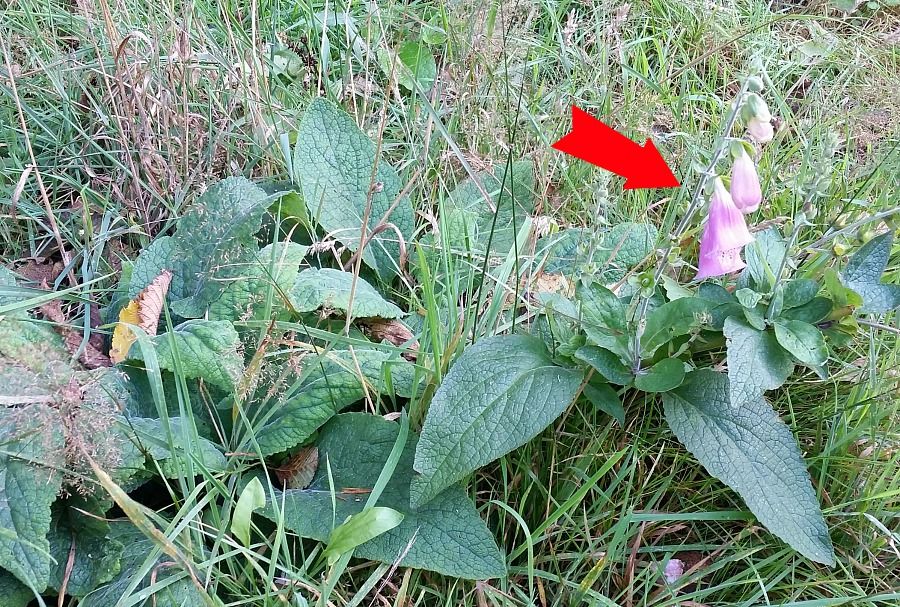
But when there are flowers, it's easy to identify this plant as Foxglove. People die from eating this plant, even a little bit of it.[1,2] Even contact with the leaves can cause severe skin rashes that last for days. With highly controlled processing, Foxglove provides important medicine for heart conditions. But it is not a plant to mess around with.[3]
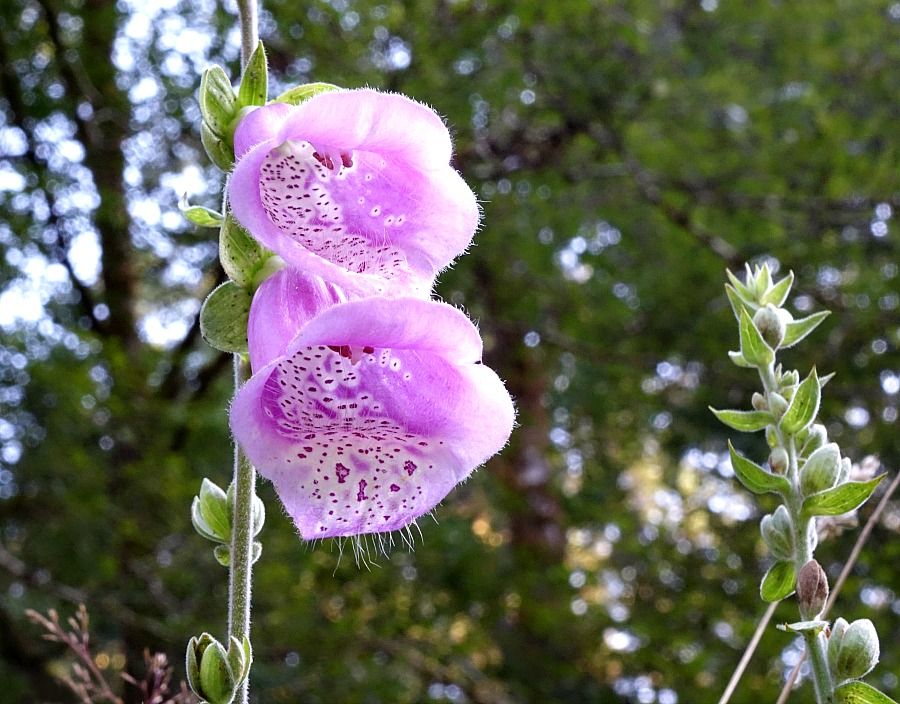
Foxglove flowers are so pretty, though, and a popular garden plant. They have escaped and spread into meadows in the Coast Range and Cascade mountains of Oregon. Hummingbirds and bumblebees like foxglove nectar! Can you imagine a bumblebee working its way into these flowers? Look at those tiny hairs on the lower surface inside the flowers!
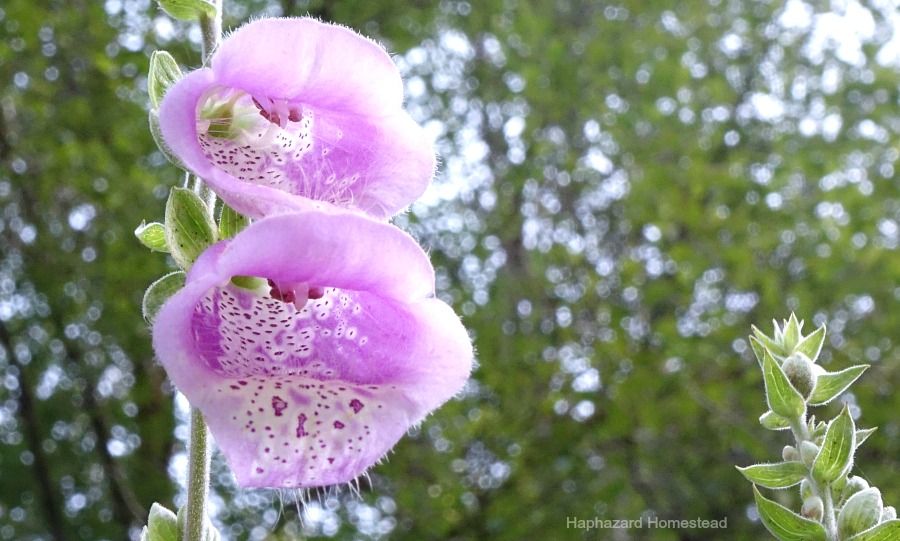
That would be a tight fit for a bumblebee, working its way deep into the center of the flower! You can see how it would get pollen all over its back, to take to the next flower!
So what did I do with this plant? I left it alone!
For trying to identify my mystery plant, @osm0sis and @erikaflynn each get $1 SBD. Check your wallets!

A Mushroom for Artists!
Walking along the meadow's edge, I saw them... mushrooms! Growing from a dead log, even without any rain for months!
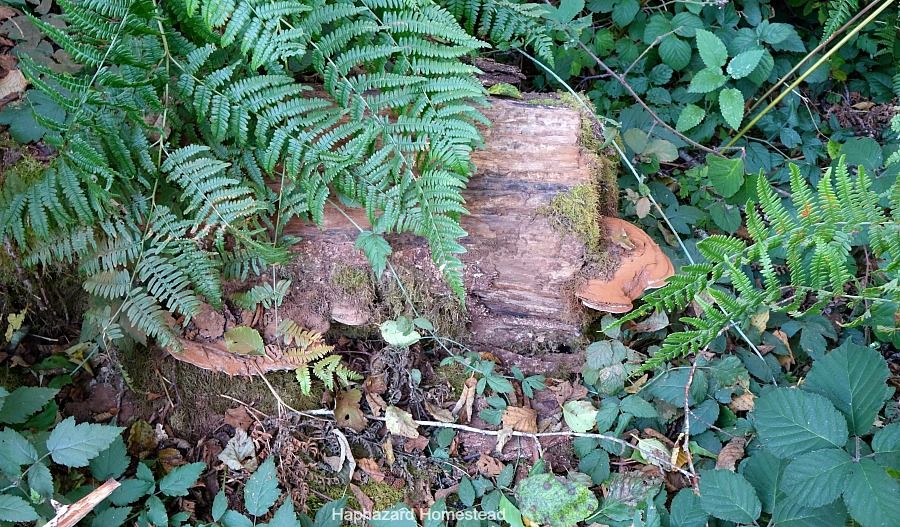
There are 2 patches of mushrooms on this log. Do you see both of them?

Did you see this big bracket fungus on the left side of the log?
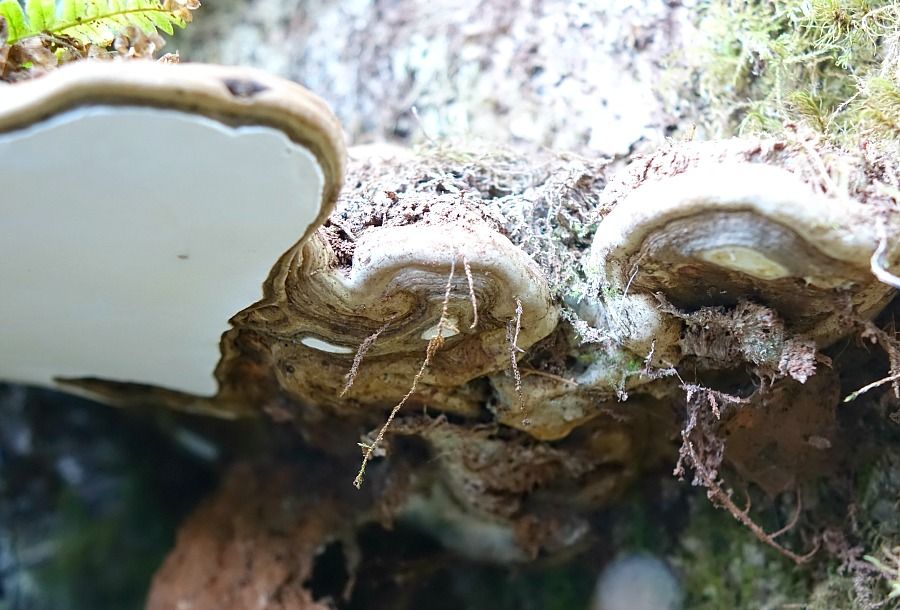
I had to work hard to get underneath that bracket fungus to take a picture of the underside! The white part is the area that is actively growing and sending out spores.
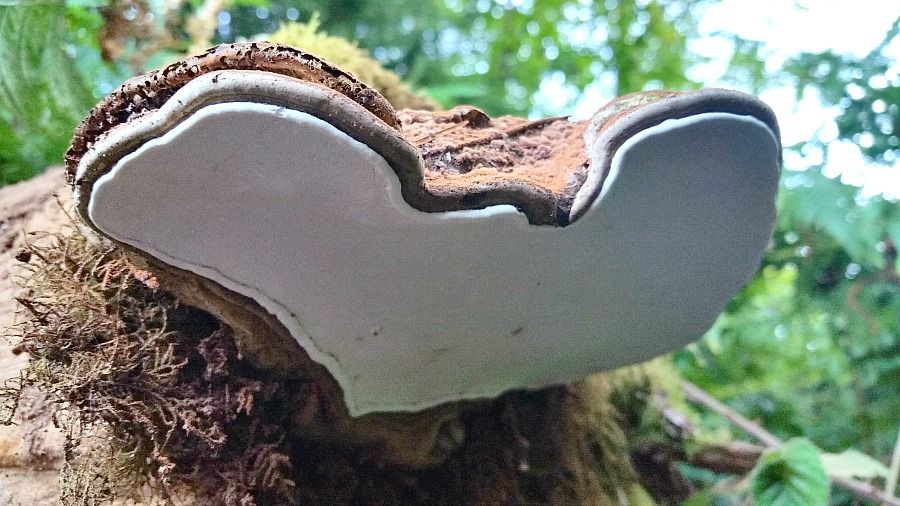
This is the underside of the bracket on the right side of the log. Can you tell what kind of mushroom it is?
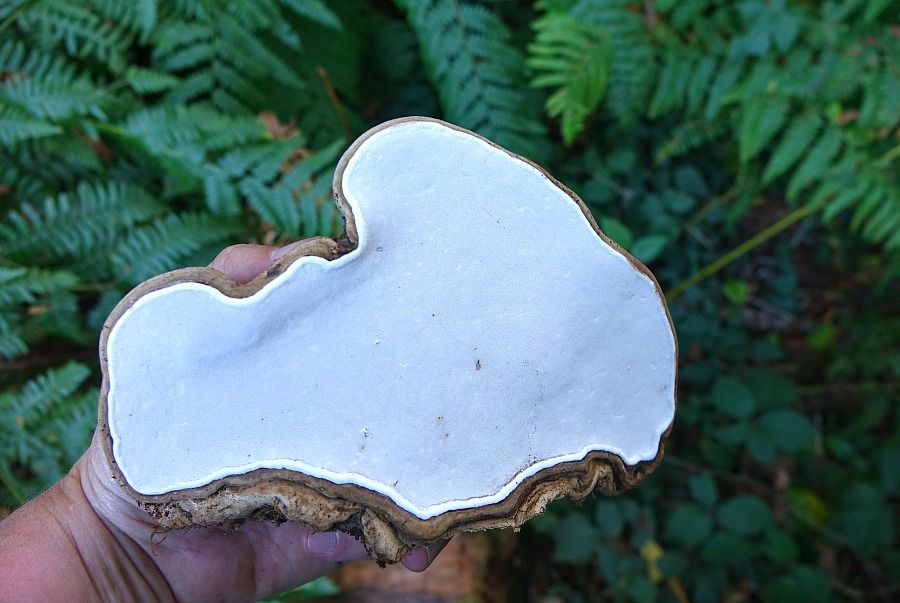
It's the Artist's Conk. They are common bracket fungus in western Oregon. Their underside is so white, with tiny pores. But they will permanently stain brown, any place that white surface is touched. I have to be careful not to make a smudgy mess of this one! There is a lot to appreciate about this great mushroom. Stay tuned for a future post that shows why they are called the Artist's Conk, how to use them for tea, and more!

Not Every Edible Plant Is Edible All the Time
I continued around the meadow's edge. And came upon a couple plants that I eat. But in the spring, not the fall. These plants are way too old to eat!
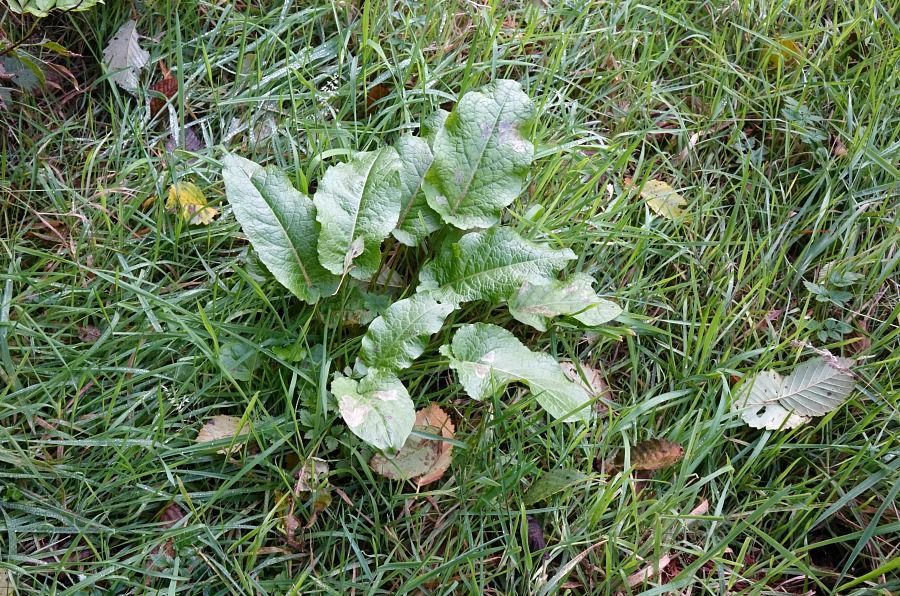
This is Broad-leaf dock. It has a tart, lemony flavor. I like to mix it with other greens, rather than eat it alone. It's good raw or cooked, although it turns a dull olive-green when it's cooked - not exactly an appetizing color!
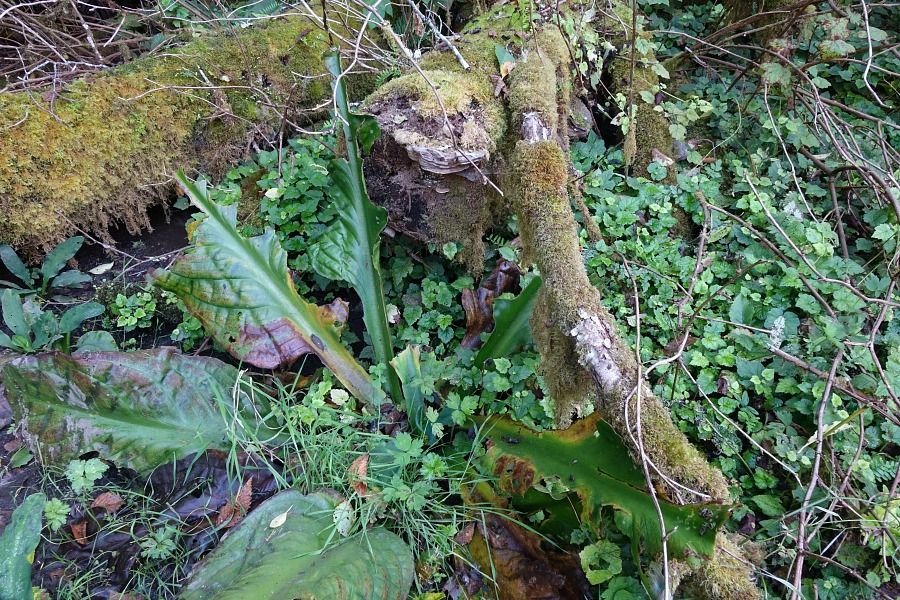
What an old, worn-out Western Skunk Cabbage! It is way too old to eat those leaves. Both the Western and Eastern skunk cabbage takes some special preparation. It took me 3 painful failures before I understood how to really appreciate these plants. A lot of books have it all wrong -- and it's one way I tell whether someone who wrote a foraging book actually tried everything they wrote about!
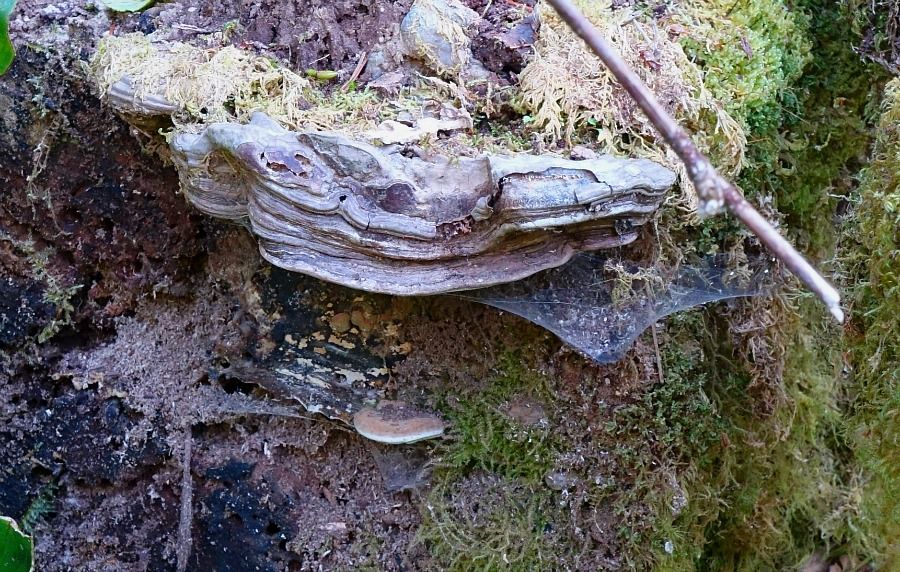
Of course, I can't let those mushrooms on the log, behind the skunk cabbage, go unnoticed! I don't want to step into the muck by the skunk cabbage to look underneath the mushroom bracket. So I'm not positive what kind it is. Do you see the fresh little brown one below the gnarly old gray one?

Let's Find A Snack!
I can enjoy a walk without finding something to eat, I swear. But there is a lot of food out there!
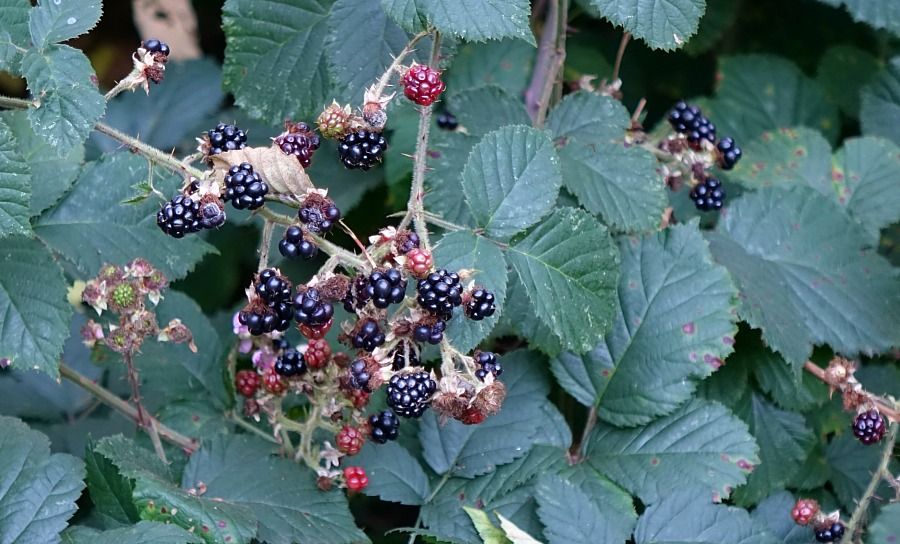
Blackberries! Himalayan blackberries are a noxious, invasive exotic plant in Oregon. They grow in such impenetrable thickets! But at least their berries are good to eat and there is no risk of harvesting too many! They are sweet and flavorful!
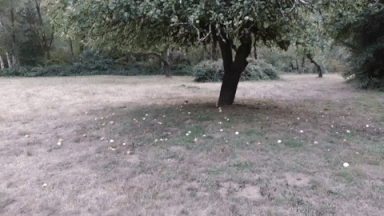.gif)
Look! What's that? An old apple tree! With apples on the ground. This group campground was a homestead, long ago. But some of the apple trees are still around. Let's go see if those apples are any good!
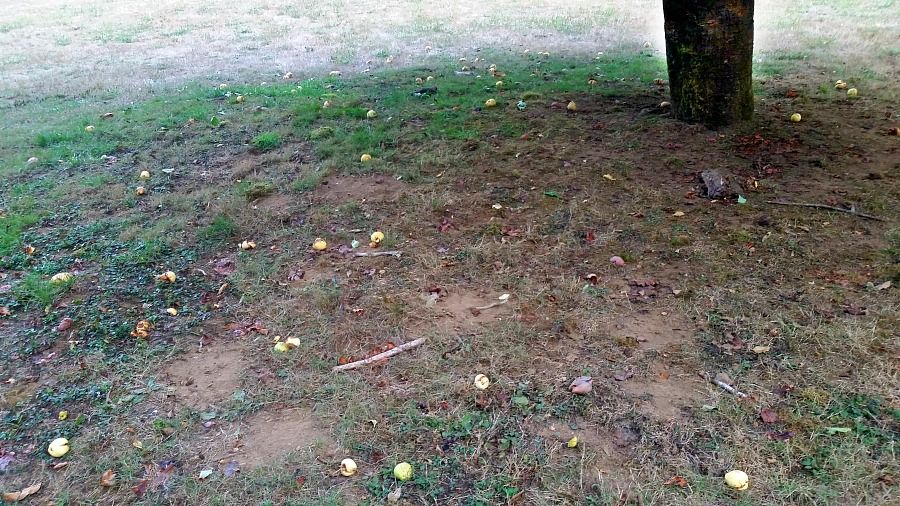
I'm surprised that no deer have eaten the fallen apples, even though they don't look in the best shape.
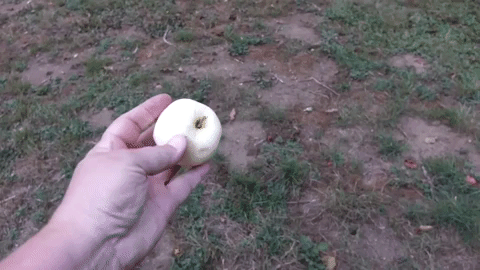.gif)
They are Yellow Transparent apples. They are old variety, planted a lot in western Oregon as the earliest-ripening variety of apple. My neighbor's Yellow Transparent has ripe apples in early August, but the season is a little later here in the coastal forest.
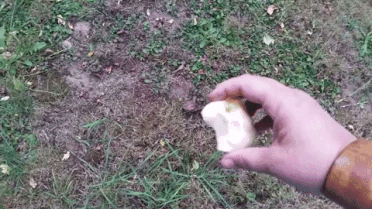.gif)
Yellow Transparent apples are notorious for being in good eating condition for only about 1/2 hour before they turn soft and mealy. But I found a few that were good. Soft and crumbly inside, but with a nice tart flavor!
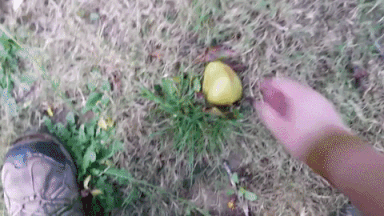.gif)
This hard green apple looks a like a Hudson Golden Gem - a variety discovered by chance in Oregon. I have one of these trees in my own yard. They are a late-ripening apple. This one is a long way from being ready to eat! I'll have to come back here!

One Last Stop
On the way back home, I came across a roadside pull-out with a sign that says "Maximum 5 Gallon Fill". It's a spring!
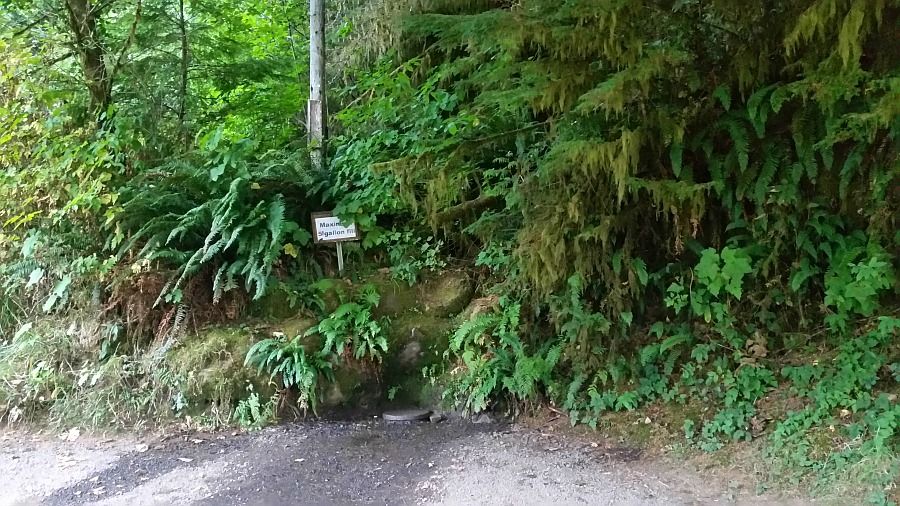
I watch a couple folks drive up and fill jugs at the tap. The spring must be higher up the hill.
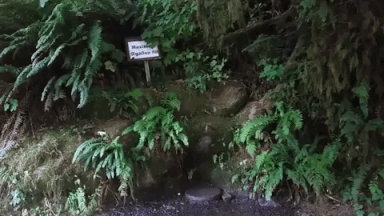.gif)
Can you see the tap? Next time I come back this way, I'm bringing some big jugs, so I can take home some spring water!

Thanks for Walking With Me
I'll be continuing my series of travels to parts of western Oregon all through the autumn of 2017. I hope you will join me -- especially if you like mushrooms! Earlier posts in this series are: Escape to the Marine Layer - Part 1 and Part 2. // Saunter in the Siuslaw - Part 1
Thanks to @lyndsaybowes for the #walkwithme tag! And to everyone using that tag! Enjoy your walks!
- Do you have any Foxglove in gardens around you?
- Have you ever seen an Artist's Conk mushroom?
- Have you ever eaten Skunk cabbage?
- Do you like wild blackberries?
- Have you ever eaten a Yellow Transparent apple?
- Do you have any springs near you?

Plant List
- Foxglove - Digitalis purpurea - not for eating or handling!
- Artist's Conk - Ganoderma applanatum
- Broad-leaf dock - Rumex obtusifolius
- Western skunk cabbage - Lysichiton americanus - special processing required!
- Eastern skunk cabbage - Symplocarpus foetidus - special processing required!
- Himalayan blackberry - Rubus armeniacus
- Apple - Malus domestica
References: 1 - Fatal cardiac glycoside poisoning due to mistaking foxglove for comfrey. Wu et al., 2017. Clinical Toxicology 55(7):670-673. 2- Acute accidental Digitalis intoxication of a whole family due to mistaking foxglove for borage. Maffe et al., 2009. J Cardiovasc Med 10(9):727-32. 3 - Digitalis poisoning: Historical and forensic aspects. Burchell, 1983. J Am. College Cardiology 1(2):506-516.
Haphazard Homestead
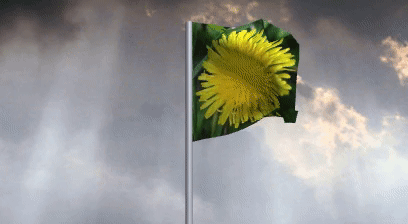
foraging, gardening, nature, simple living close to the land
All content is 100% Haphazard Homestead!
My YouTube channel: Haphazard Homestead